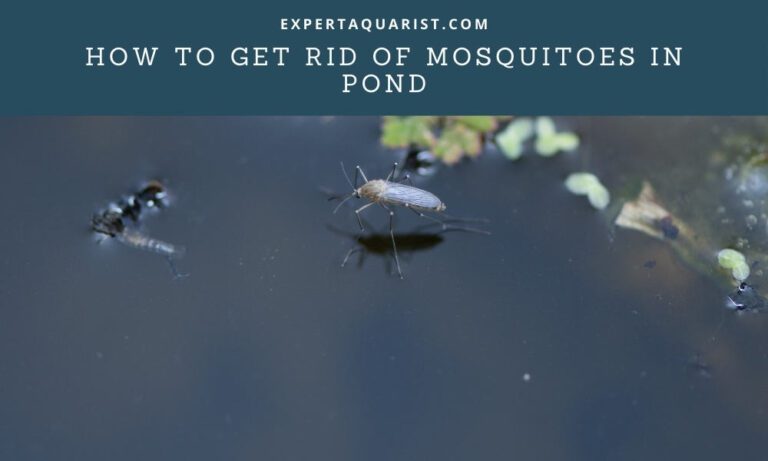You might be surprised to learn that the majority of people who own ponds or water features are not aware of how much their liner can affect the overall quality, look, and value of their pool. The most common mistake made by pond owners is that they overlook the condition of the liner. Often liners get damaged and aren’t in workable conditions.
In such times you should know how to put a new liner over the old one.
This is an easy process that goes as follows: Lay the new pond liner and cut the excess material. Fill in any gaps until they level with your surroundings. Then finally seal it off by filling it around the edges with soil or gravel.
Keep reading to know more…
Putting a new pond liner over the old one: step by step procedure
You can follow a few easy steps to make sure both liners are connected thoroughly. The steps are as simple as you can imagine, unless simpler.

1. Determining The Perfect Time to change the liner
The saying “better late than never” doesn’t work with changing your pond liner. If you are late then your old liner is already inadequate to use, and if you are early then you will be wasting your money by changing it. So, determining when to change your pond liner is the first and most important step.
The first sign that indicates that your pond is out of date is when water starts leaking out from here and there of your liner. Sometimes, excessive dirt or floaties floating in the pond is a sign as well. When you start noticing these, it’s time to change the liner.
Don’t forget to be mindful about the breeding months if you have aquatic life, plants and animals living in your pond. Especially during the spring season, so it would be wise not to hamper their peace and avoid this season. Instead of summer or spring, you should do it in the winter.
Winter is the best time to do your pond liner changing because, during that time aquatic plants, fishes and animals are in hibernation. So, the whole process won’t cause much trouble to them.
On the other hand, during winter it’s easier to do the laborious work than in summer. In summer it’s hot. A little bit of work will surely make you sweaty and dreadful and it surely won’t be fun for you. Hence, choosing to do it in the winter will be the best decision you can make.
2. Extract everything out of your pond
You need to take out everything inside the pond so you can follow the rest of the procedure of changing the liner. Another important reason why you should take everything out with proper care is so you can put them back inside again as it was before without disrupting the overall condition of the pond.
Start by taking all of the debris remaining here and there and clear the pond properly, so nothing interrupts while connecting the old and new liner. It’s very important to be careful with this because if any dirt gets between the old liner and the new liner, there will be issues.
Issues like creating holes in the liner, making the new liner less durable, etc. Then you should focus on how you can extract the aquatic flowers, plants, and animals and keep them alive until you have refilled the pond with water.
The fishes will come out slowly as you drain the water with all the other aquatic lives. Keep a few buckets filled with water ready nearby to transfer them there.
Keep in mind to make the whole liner changing process faster because the sudden temperature change is not great for aquatic lives and you should take them back to their natural habitat as soon as possible.
3. Find and fix issues with old liner
In most cases, the main issue for which you will be changing the liner holes. The holes in your old liner allow debris to get inside the pond and as a result, it becomes harder to maintain the filtration and clarity of water.
So, before putting on the new liner, it is very important to check the old one for holes. If you find holes that are small, lucky for you. But if the holes are larger, it would be best for you to change the whole liner.
When you find some, patch them up before adding the new liner. It prevents both the old and new liner from future holes and leakages. For patching up the holes, purchase specific tools available at almost every store which helps with fixing pond liner.
Another thing to make sure before putting on the new liner is to make it wrinkle-free. Because if the new liner has wrinkles in it, debris will come up through the cracks from the bottom.
4. Research on which liner to get
In the market, there are lots of brands available and mind you not all are the same. But there are a few on which you can rely, closing your eyes about durability and flexibility.
As you are going to use the new liner over the old one, your first priority should be to get a flexible liner. These liners have some benefits as well apart from being flexible, such as they are cheaper, have exceptional longevity and you can get it made precisely according to the dimensions of the pond.
And to get your liners cut precisely according to the dimensions of your pond is very important to get a smooth crackless liner. It will fit your pond perfectly and won’t have any wrinkles. You will be able to place it over the old liner easily as well by using adhesive tape.
It also gives you the advantage of enlarging even more in future if you want to by adding on more liner. Therefore, when it comes to changing your old liner and getting a new one, you should definitely go for a flexible liner.
Another type you can go for is performed liners. It fits the dimensions of your pond naturally without cutting it. But it’s very expensive compared to usual flexible liners and it’s not available for larger ponds. Only limited-sized preformed liners are available in the market.
5. Get rid of wrinkles from the new liner
While adding a new liner on top of the old one, try to keep it as wrinkle-free as you can. The more wrinkle-free you can keep it, the more durable it will be in the long run.
By making sure the new liner is wrinkle-free, you also make sure of fewer holes in the future. You won’t have to worry about changing your liner again for a long time and the new liner will hold fewer bacteria.
When the liner is laid and you are about to fill it up with water, hold your horses there. Pour water slowly because if you pour water fast it will leave many wrinkles. By keeping the liner flat and smoothing out the surface, you should add water. This will leave no room for wrinkles.
Keep the liner as flat as possible and make sure to smooth out as you are filling water.
A few wrinkles are inevitable, but what you can try is to keep those closest to the border. As a result, even if you get holes in the future, they won’t be at the bottom, rather there will be a few small holes on the edges.
Another great remedy for wrinkles can be adding a number of rucks and aquatic flowers near the basin of the pond. There will be fewer or no holes as the rocks are heavy, they won’t let debris or wrinkles move around the liner. Aquatic plants come in handy to clean up bacteria and unhealthy algae growth in the pond.
6. Glue or staple the new liner to finish off the process
In two ways you can lay down a new pond liner over the old one. One is a bit better and productive in some ways than another.. But, before placing the new liner over another, you must eliminate the excess liner.
You can use glue to stick the new liner to the old one. Though it might be a bit time-consuming, it surely will make your pond liner long-lasting. You can use a portion of quick prime adhesive across the edges of both the liners to stick them together strong and tight.
But be mindful that you smooth out any visible wrinkles while spraying the adhesive. When you glue down both the liners, it prevents debris and dirt from coming inside through the cracks and to cause holes. Also, fill any visible gap using small rocks.
Being time consuming as it is, it also takes some extra time to get dry. Yet the aftermath is worth spending a little more time on gluing.
Stapling’s silver lining is that it’s cheap and less time consuming. Apart from that, it has no beneficial points to choose over gluing. Because stapling leaves you with cracks in between the lines, which will allow small rocks as well as debris to get inside causing holes. And for sure you don’t want that.
So, gluing should be your go to finishing move. And after letting it get dry for a while, you can start filling it with water slowly. Then you can add all the aquatic life you had in your pond, and there you go. You won’t have to worry about your pond liners for a few years now.
Last Words
Now that you know how to put a new liner over the old one, it’s time for you and your family to enjoy all those great memories again. Don’t forget to filter water on a regular basis. Clear all the other wastes as well. Which will ensure a longer life for the new liner and a little less stress for you.






